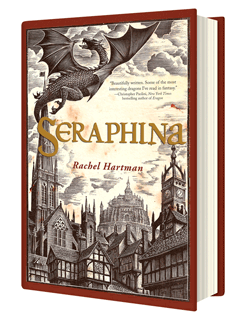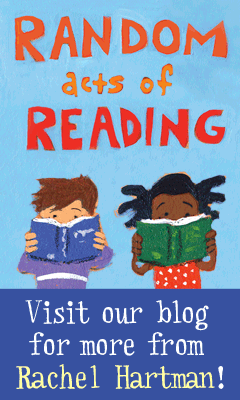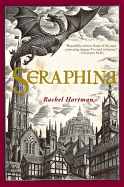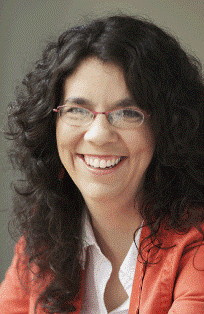Seraphina
by Rachel Hartman
In medieval Lavondaville, the capital of Goredd, an uneasy truce exists between dragons and humans. Narrator Seraphina, as readers quickly discover, is the product of a dragon mother and a human father. Dragons know how to disguise themselves as humans, so everyone believes Seraphina to be entirely human--just as Seraphina's father believed her mother to be. Only when Seraphina's mother died in childbirth did he learn her true nature. Although the child never knew her mother, she did leave her daughter a gift of "mind-pearls," memories to be released to Seraphina by specific triggers. For instance, a memory of Seraphina's uncle, Orma, her mother's brother, enveloped her when, as a small child, she saw Orma in dragon form for the first time. Her mother also passed on to Seraphina her gift for music. Dragons are known for their technical skill, but their music is often devoid of emotion. However, with the empathy she gained from her human father coupled with the musical skills inherited by her mother, Seraphina is considered one of the finest musicians in the land. She won a coveted position assisting the court composer, and she also tutors Princess Glisselda, betrothed to Prince Lucian.
After the death of Prince Rufus, heir to the throne, in a manner suspiciously like a dragon's preferred means (decapitation), tensions run high between humans and dragons. Seraphina's father--the architect of the peace treaty that's been observed for 40 years--begs his daughter to stay under the radar. But when two of the court musicians cannot perform at Prince Rufus's memorial, Seraphina must step in, and her stellar performance draws much more attention than she would have wanted--from both the human and dragon realms. Her unique position exposes Seraphina to aspects of both dragon and human societies, and when she decides to trust Prince Lucian with her suspicions about Prince Rufus's killer, they embark on a journey that tests her loyalties and her strength.
Hartman raises provocative questions of forbidden love--that of Seraphina's parents, and Seraphina's developing feelings for Prince Lucian. Her feelings are out of bounds not only because of his humanity but also his royalty. The author also describes the impossibility of repressing Seraphina's passion for music, also portrayed as "forbidden" by her father, at least initially. This leads to Seraphina facing some difficult truths about her father; when he finally consents to let Orma instruct her in music, she realizes "He had never been merely protecting me; he had been protecting his broken heart." And Seraphina must confront even more difficult facts about herself: "If one believes there is truth in art--and I do--then it's troubling how similar the skill of performing is to lying." How much of herself can she reveal to Prince Lucian? Can she ever have a loving relationship with any human, given her complicated heritage? In her emotional pain, she tries to physically remove the scales on her arm, hidden by her clothing ("I felt the freeze again, all through me, and experienced it as relief. I could not hate when my arm hurt this much"). Her form may be unique, but Seraphina's feelings are universal.
In this first of two planned books, Hartman creates a world simultaneously strange and familiar. Her dragons are as magnetic as her human characters, and even minor characters are fully realized. Teens will readily identify with Seraphina's conflicting desires--to please her family or to make her own future. She must decide for herself whom she can trust and which path to take. --Jennifer M. Brown









 Where did the idea for Seraphina come from?
Where did the idea for Seraphina come from?